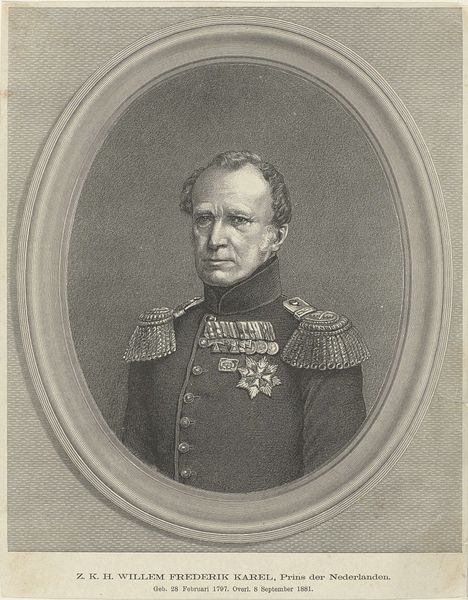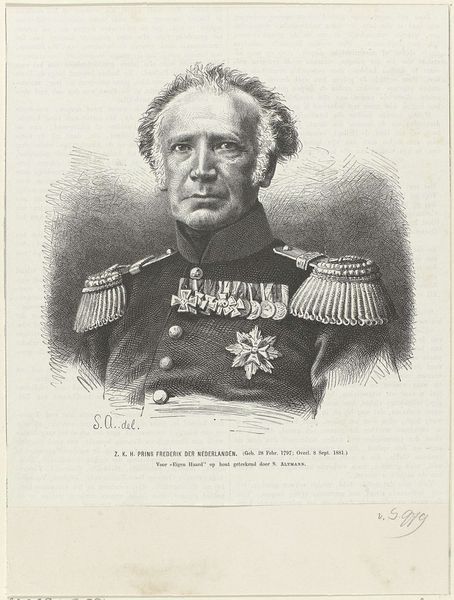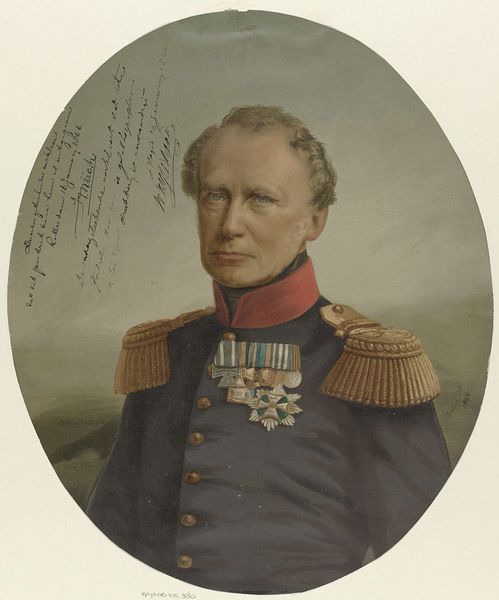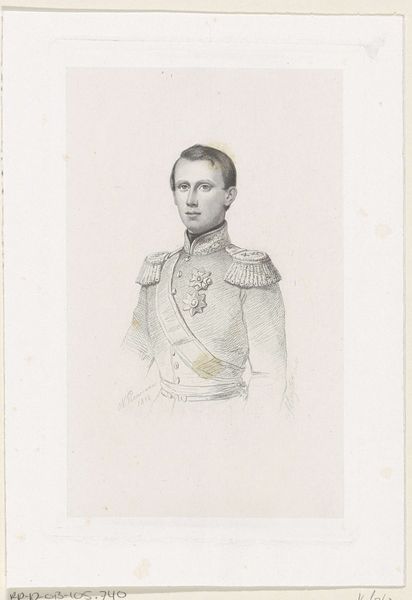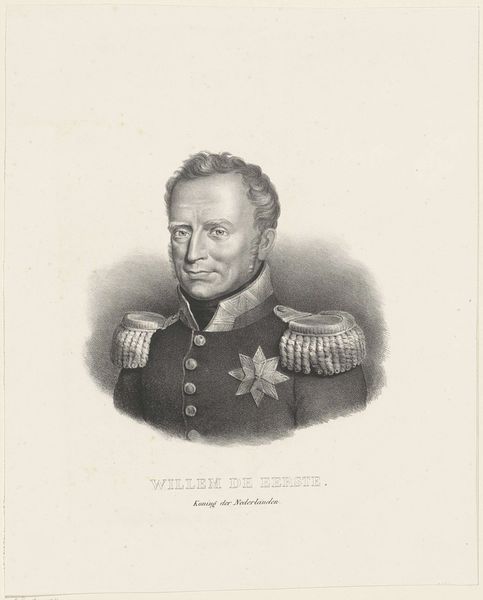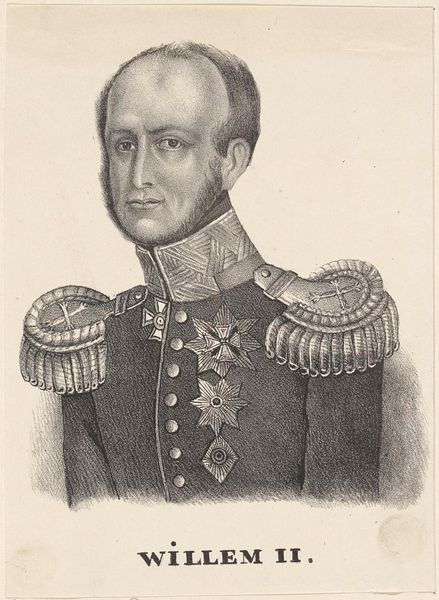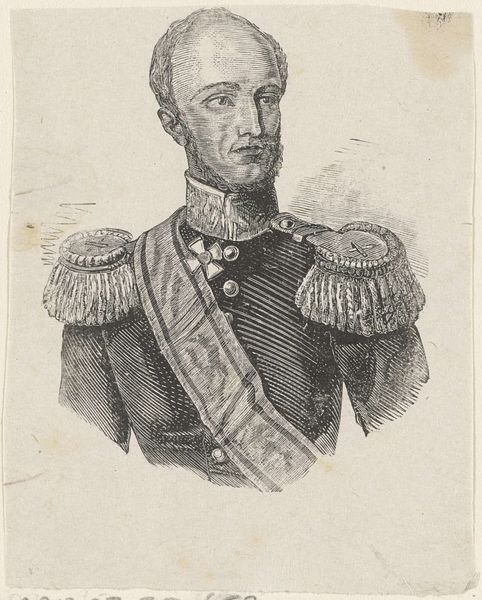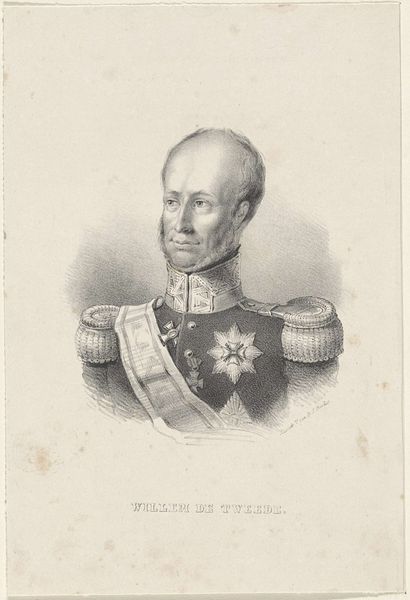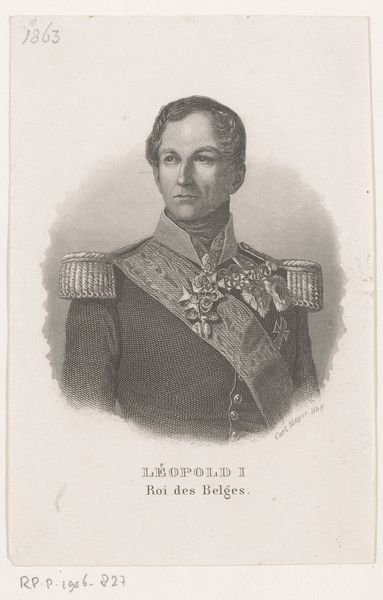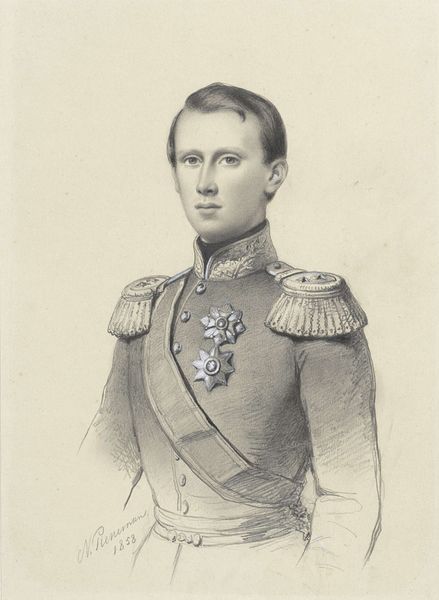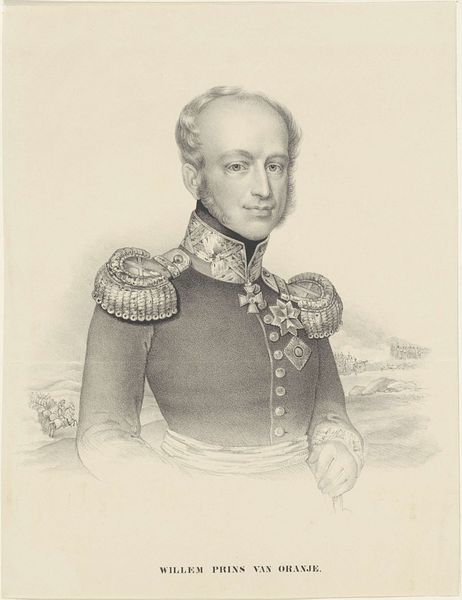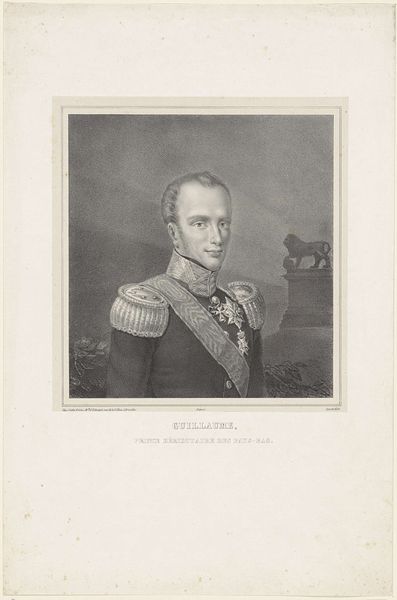
print, engraving
#
portrait
# print
#
portrait reference
#
pencil drawing
#
portrait drawing
#
history-painting
#
academic-art
#
engraving
Dimensions: height 239 mm, width 158 mm
Copyright: Rijks Museum: Open Domain
Editor: So this is “Portret van Frederik, prins der Nederlanden,” made sometime between 1881 and 1895 by Johannes Walter. It’s a print, hanging here at the Rijksmuseum. It's a pretty formal portrait – all those medals! – but there’s something kind of weary in his face that I find really interesting. What stands out to you? Curator: The symbols of status are fascinating, aren't they? Beyond mere markers of rank, each medal and embellishment functioned as a potent symbol of duty, courage, and perhaps, even sacrifice. What narratives of nationhood were woven into each insignia? And how did Frederick himself interpret and embody those symbolic burdens? Editor: Burdens? Curator: Consider the weight of expectation carried by symbols, how societies use them to construct identity, enforce conformity, and commemorate shared values. What happens when the symbol and the individual diverge? Does the image start to hint at something beyond the official narrative? Editor: I see what you mean. The fatigue in his eyes becomes almost a crack in the facade. Are you saying the artist knowingly included that to subvert expectations? Curator: Perhaps Walter intended to hint at something beyond mere official representation. Consider the tradition of royal portraiture; it usually emphasizes power. But here, the subtle hint of weariness transforms the symbolic language. The prince is not simply a symbol of power but also a man bearing its weight. Editor: That’s such a different way to look at portraits! So much more than just "this is who they are, this is when they lived". Thanks! Curator: My pleasure. Symbols whisper stories across time, and by understanding their language, we start to truly see.
Comments
No comments
Be the first to comment and join the conversation on the ultimate creative platform.
